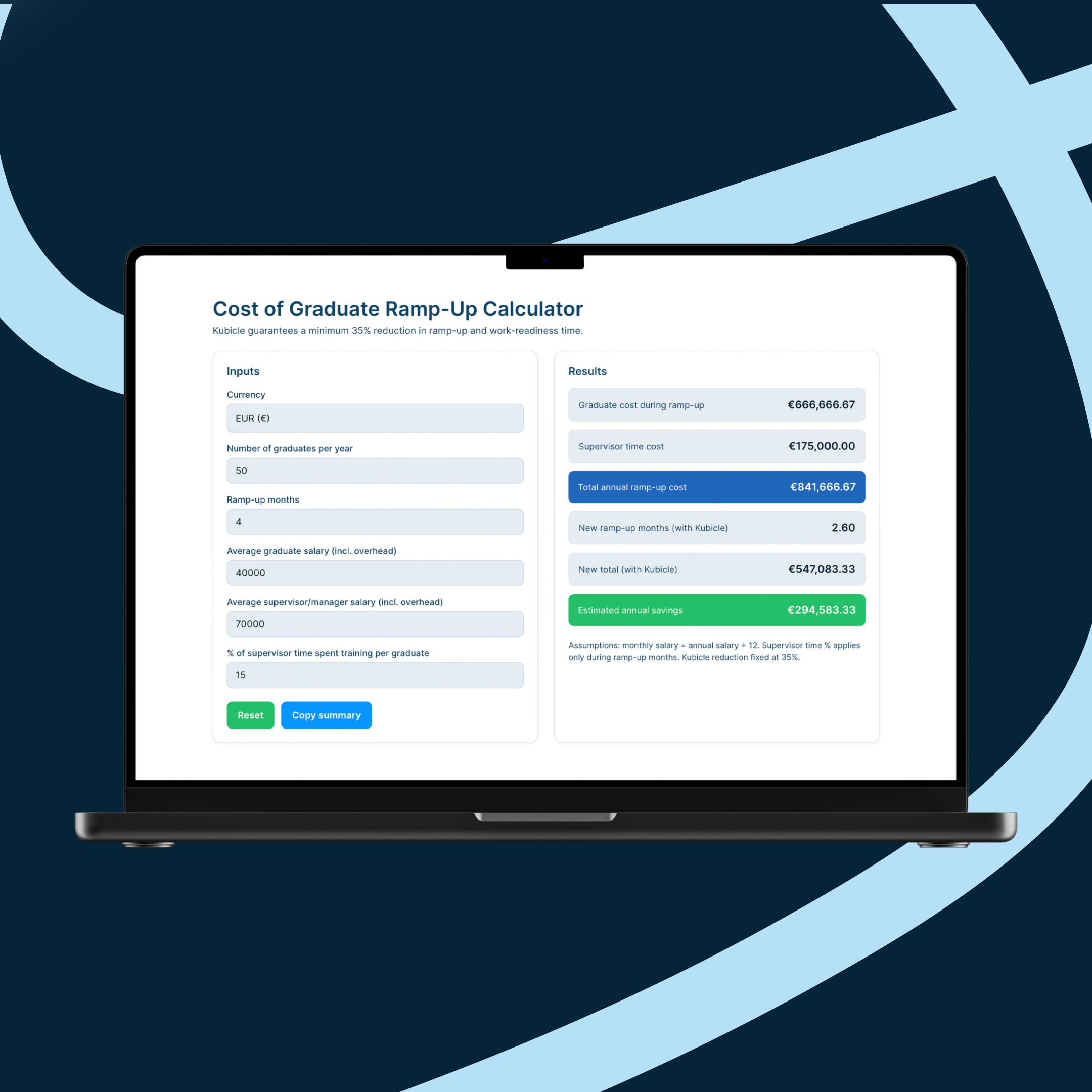How to Maximize the Benefits of Investing in Early Career Training Programs

Speak to One of our Learning Consultants Today
Talk to SalesInvesting in early career training programs is a strategic move for organizations looking to build a strong talent pipeline and ensure long-term success. When done correctly, these programs not only enhance the skills of new employees but also provide significant returns on investment (ROI). Here are some of the strategies you need to employ to maximize the benefits of running graduate or early career programs.
1. Define Clear Objectives and Outcomes
Setting clear objectives and desired outcomes is the first step in ensuring the effectiveness of any training program. These goals should align with the organization’s strategic vision and address specific skill gaps.
How to Implement:
- Needs Assessment: Conduct a thorough needs assessment to identify the key skills and competencies required. Decide what areas do you need to focus on growing and calculate what the impact on productivity would be if your new hires gained these skills.
- SMART Goals: Establish Specific, Measurable, Achievable, Relevant, and Time-bound goals for the training program. For instance, setting a goal to improve data literacy skills in 60% of participants within six months can provide a clear target for both trainers and participants.
- Alignment with Business Goals: Ensure that the training objectives are aligned with broader business goals and strategies. If the business goal is to enhance customer satisfaction through data-driven insights, the training should focus on data collection, analysis, and interpretation.
2. Focus on Critical Skills
In the age of digital transformation, data and AI literacy are critical skills that can drive innovation and efficiency. Less than 50% of recent graduates feel proficient in digital tools and technologies that are essential for their roles. Equipping your early career professionals with these skills ensures they can leverage technology to make data-driven decisions.
How to Implement:
- Data Literacy Training: Include scalable training on data analysis tools and techniques. Ensuring your new hires can read and understand data is an essential step in setting them up for success.
- AI Fundamentals: Provide an introduction to AI concepts, including machine learning, natural language processing, and common applications. Increasing understanding around AI will lead to safer and more efficient usage.
- Hands-On Projects: Incorporate practical projects that allow participants to apply these skills in real-world scenarios, such as developing a simple machine learning model or drawing conclusions from a data set.
3. Use Blended Learning Approaches
A blended learning approach, which combines online and in-person training, caters to different learning styles and increases engagement. This method also allows for flexibility and scalability.
How to Implement:
- Online Modules: Utilize online platforms for foundational knowledge and self-paced learning. For instance, Kubicle’s online courses can be used for initial training on data literacy and digital tools.
- Interactive Workshops: Conduct in-person or virtual workshops to deepen understanding and facilitate hands-on practice. These workshops can focus on applying the skills learned online through group activities and discussions.
- Peer Learning: Encourage peer learning through group projects and discussions. For example, assigning group projects where participants must collaborate to solve real business problems can enhance learning and teamwork.
4. Leverage Mentorship and Coaching
Mentorship and coaching provide personalized guidance and support, helping early career professionals navigate their new roles and develop their skills more effectively.
How to Implement:
- Mentorship Programs: Pair new hires with experienced mentors who can provide advice, feedback, and career guidance. For example, a senior data analyst could mentor a new graduate, offering insights into advanced data analysis techniques and industry best practices.
- Regular Check-Ins: Schedule regular check-ins between mentors and mentees to discuss progress and address any challenges. This can be done through bi-weekly meetings where specific issues and achievements are reviewed.
- Coaching Sessions: Offer one-on-one coaching sessions to focus on specific development needs. For instance, personalized coaching on data visualization techniques can help participants improve their presentation skills.
5. Measure and Analyze Outcomes
Measuring the outcomes of the training program is crucial to understand its effectiveness and identify areas for improvement. Data-driven insights can help in refining the program and maximizing ROI.
How to Implement:
- Pre- and Post-Training Assessments: Conduct assessments before and after the training to measure knowledge gained and skills developed. For example, pre-training assessments can establish a baseline, while post-training assessments can show improvements.
- Performance Metrics: Track performance metrics such as productivity, efficiency, and quality of work. Use tools like dashboards to monitor these metrics in real-time and identify trends.
- Feedback Mechanisms: Collect feedback from participants and stakeholders to gauge satisfaction and areas for improvement. This can be done through surveys, focus groups, and direct interviews.
6. Foster a Continuous Learning Culture
A culture of continuous learning encourages employees to keep developing their skills, which is essential for adapting to changing business environments and technologies.
How to Implement:
- Continuous Learning Programs: Offer ongoing training and development opportunities beyond the initial program. Regularly update the training content to reflect the latest industry trends and technologies.
- Recognition and Rewards: Recognize and reward employees who actively engage in continuous learning. This can include certifications, bonuses, or public acknowledgment during company meetings.
Conclusion
Maximizing the ROI of early career training programs requires a strategic approach that includes clear objectives, incorporation of essential skills like data and AI literacy, blended learning methods, mentorship, outcome measurement, and fostering a culture of continuous learning. By implementing these strategies, organizations can ensure that their investment in training not only enhances the skills of their workforce but also drives business success and innovation.



.png)









